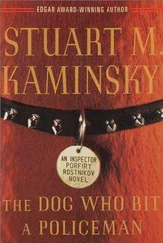Jo Coudert - The Dog Who Healed A Family
Здесь есть возможность читать онлайн «Jo Coudert - The Dog Who Healed A Family» — ознакомительный отрывок электронной книги совершенно бесплатно, а после прочтения отрывка купить полную версию. В некоторых случаях можно слушать аудио, скачать через торрент в формате fb2 и присутствует краткое содержание. Жанр: unrecognised, на английском языке. Описание произведения, (предисловие) а так же отзывы посетителей доступны на портале библиотеки ЛибКат.
- Название:The Dog Who Healed A Family
- Автор:
- Жанр:
- Год:неизвестен
- ISBN:нет данных
- Рейтинг книги:3 / 5. Голосов: 1
-
Избранное:Добавить в избранное
- Отзывы:
-
Ваша оценка:
- 60
- 1
- 2
- 3
- 4
- 5
The Dog Who Healed A Family: краткое содержание, описание и аннотация
Предлагаем к чтению аннотацию, описание, краткое содержание или предисловие (зависит от того, что написал сам автор книги «The Dog Who Healed A Family»). Если вы не нашли необходимую информацию о книге — напишите в комментариях, мы постараемся отыскать её.
The Dog Who Healed A Family — читать онлайн ознакомительный отрывок
Ниже представлен текст книги, разбитый по страницам. Система сохранения места последней прочитанной страницы, позволяет с удобством читать онлайн бесплатно книгу «The Dog Who Healed A Family», без необходимости каждый раз заново искать на чём Вы остановились. Поставьте закладку, и сможете в любой момент перейти на страницу, на которой закончили чтение.
Интервал:
Закладка:
One day a staff member on her way to work spotted a group of hunters at the base of the mountain. Strolling down the road toward them was Frankie. She got out of her car, turned Frankie around so that he was headed up the mountain, then drove along behind him at five miles an hour. Frankie kept turning to look at her reproachfully, but she herded him with her car until she got him back to safety. On another memorable day, a pickup truck filled with hunters drove up to the power plant. When the tailgate was lowered, Frankie jumped from their midst. The hunters had read about Frankie in the local paper, and when they spotted a tame deer wearing a yellow collar, they figured it must be Frankie and brought him home.
After the rutting season, Frankie reappeared, but this time when he came out of the woods, three does were with him. And that has been true in the years since. The does wait for him at the edge of the lawn, and when he has visited with Jean and made his tour of the terraces and paused awhile under the crab apple tree waiting for George to shake down some fruit for him, Frankie rejoins the does and the little group goes back into the woods.
Because the hunting season is a time of anxiety for the whole of Glen Gardner until they know Frankie has made it through safely, George and the other people at Glen Gardner debate each fall whether to lock Frankie in the stable for his own safety. The vote always goes against it. The feeling is that Frankie symbolizes the philosophy of Glen Gardner, which is to provide care but not to undermine independence. “A deer and a person, they each have their dignity,” Jean says. “It’s okay to help them when they need help, but you mustn’t take their choices away from them.”
So, Frankie Buck, the wonderful deer of Glen Gardner, remains free. He runs risks, of course, but life itself is risky, and if Frankie should happen to get into trouble, he knows where there are friends he can count on.
I Love You, Pat Myers
Pat Myers was returning home after four days in the hospital for tests. “Hi, Casey. I’m back,” she called as she unlocked the door of her apartment. Casey, her African gray parrot, sprang to the side of his cage, chattering with excitement. “Hey, you’re really glad to see me, aren’t you?” Pat teased as Casey bounced along his perch. “Tell me about it.”
The parrot drew himself up like a small boy bursting to speak but at a loss for words. He jigged. He pranced. He peered at Pat with one sharp eye, then the other. Finally he hit upon a phrase that pleased him. “Shall we do the dishes?” he exploded happily.
“What a greeting.” Pat laughed, opening the cage so Casey could hop onto her hand and be carried to the living room. As she settled in an easy chair, Casey sidled up her arm; Pat crooked her elbow and the bird settled down with his head nestled on her shoulder. Affectionately Pat dusted the tips of her fingers over his velvety gray feathers and scarlet tail. “I love you,” she said. “Can you say ‘I love you, Pat Myers’?”
Casey cocked an eye at her. “I live on Mallard View.”
“I know where you live, funny bird. Tell me you love me.”
“Funny bird.”
A widow with two married children, Pat had lived alone for some years and devoted her energy to running a chain of dress shops. It was a happy and successful life. Then one evening she was watching television when, without warning, her eyes went out of focus. Innumerable tests later, a diagnosis of arteritis was established. Treatment of the inflammation of an artery in her temple lasted for more than a year and led to an awkward weight gain, swollen legs and such difficulty in breathing that Pat had to give up her business and for months was scarcely able to leave her apartment, which more and more grew to feel oppressively silent and empty. Always an outgoing, gregarious woman, Pat was reluctant to admit, even to her daughter, just how lonely she was, but finally she broke down and confessed, “Annie, I’m going nuts here by myself. What do you think—should I advertise for someone to live with me?”
“That’s such a lottery,” her daughter said. “How about a pet?”
“I’ve thought of that, but I haven’t the strength to walk a dog, I’m allergic to cats and fish don’t have a whole lot to say.”
“Birds do,” said her daughter. “Why not a parrot?”
That struck Pat as possibly a good idea, and she telephoned an ornithologist to ask his advice. After ruling out a macaw as being too big and a cockatoo or cockatiel as possibly triggering Pat’s allergies, he recommended an African gray, which he described as the most accomplished talker among parrots. Pat and Annie visited a breeder and were shown two little featherless creatures huddled together for warmth. The breeder explained that the eggs were hatched in an incubator and the babies kept separate from their parents so that they would become imprinted on humans and make excellent pets. “After your bird’s been with you for a while,” the breeder assured Pat, “he’ll think you’re his mother.”
“I’m not sure I want to be the mother of something that looks like a plucked chicken,” Pat said doubtfully. But Annie persuaded her to put a deposit down on the bird with the brightest eyes, and when he was three months old, feathered out and able to eat solid food, she went with Pat to fetch Casey home.
It was only a matter of days before Pat was saying to Annie, “I didn’t realize I talked so much. Casey’s picking up all kinds of words.”
“I could have told you,” her daughter said with a smile. “Just be sure you watch your language.”
“Who, me? I’m a perfect lady.”
The sentence Casey learned first was “Where’s my glasses?” and coming fast on its heels was “Where’s my purse?” Every time Pat began circling the apartment, scanning tabletops, opening drawers and feeling behind pillows, Casey set up a litany: “Where’s my glasses? Where’s my glasses?”
“You probably know where they are, smarty-pants.”
“Where’s my purse?”
“I’m looking for my glasses.”
“Smarty-pants.”
When Pat found her glasses and her purse and went to get her coat out of the closet, Casey switched to “So long. See you later.” And when she came home again, after going to the supermarket in the Minnesota weather, she called out, “Hi, Casey!” and Casey greeted her from the den with “Holy smokes, it’s cold out there!” She joked, “You took the words right out of my mouth.”
“What fun it is to have him,” Pat told Annie. “It makes the whole place feel better.”
“You know what?” Annie said. “You’re beginning to feel better, too.”
“So I am. They say laughter’s good for you, and Casey gives me four or five great laughs a day.”
Like the day a plumber came to repair a leak under the kitchen sink. In his cage in the den, Casey cracked seeds and occasionally eyed the plumber through the open door. Suddenly the parrot broke the silence by reciting, “One potato, two potato, three potato, four …”
“What?” demanded the plumber from under the sink.
Casey mimicked Pat’s inflections perfectly. “Don’t poo on the rug,” he ordered.
The plumber pushed himself out from under the sink and marched into the living room. “If you’re going to play games, lady, you can just get yourself another plumber.” Pat looked at him blankly. The plumber hesitated. “That was you saying those things, wasn’t it?”
Конец ознакомительного фрагмента.
Текст предоставлен ООО «ЛитРес».
Прочитайте эту книгу целиком, купив полную легальную версию на ЛитРес.
Читать дальшеИнтервал:
Закладка:
Похожие книги на «The Dog Who Healed A Family»
Представляем Вашему вниманию похожие книги на «The Dog Who Healed A Family» списком для выбора. Мы отобрали схожую по названию и смыслу литературу в надежде предоставить читателям больше вариантов отыскать новые, интересные, ещё непрочитанные произведения.
Обсуждение, отзывы о книге «The Dog Who Healed A Family» и просто собственные мнения читателей. Оставьте ваши комментарии, напишите, что Вы думаете о произведении, его смысле или главных героях. Укажите что конкретно понравилось, а что нет, и почему Вы так считаете.












